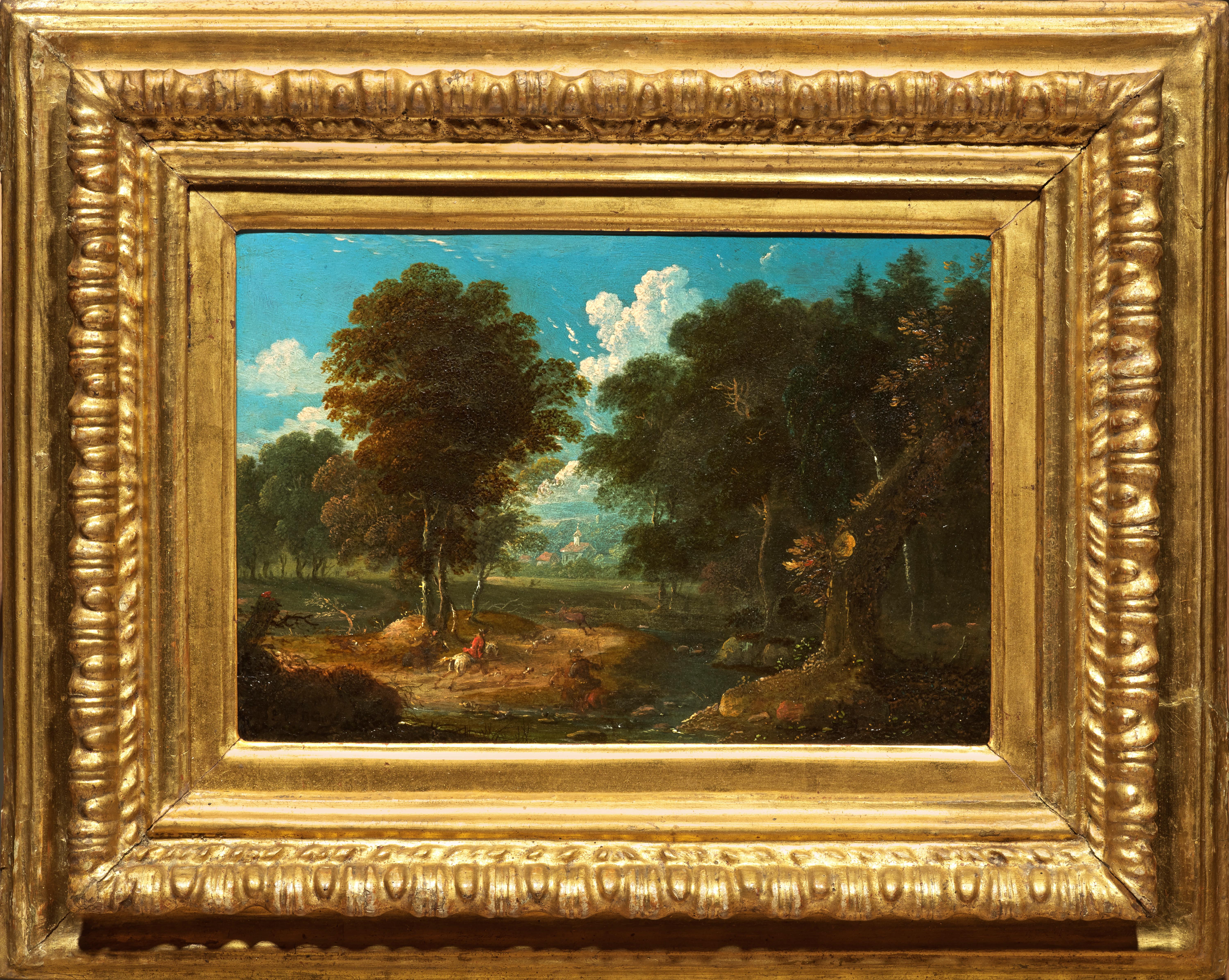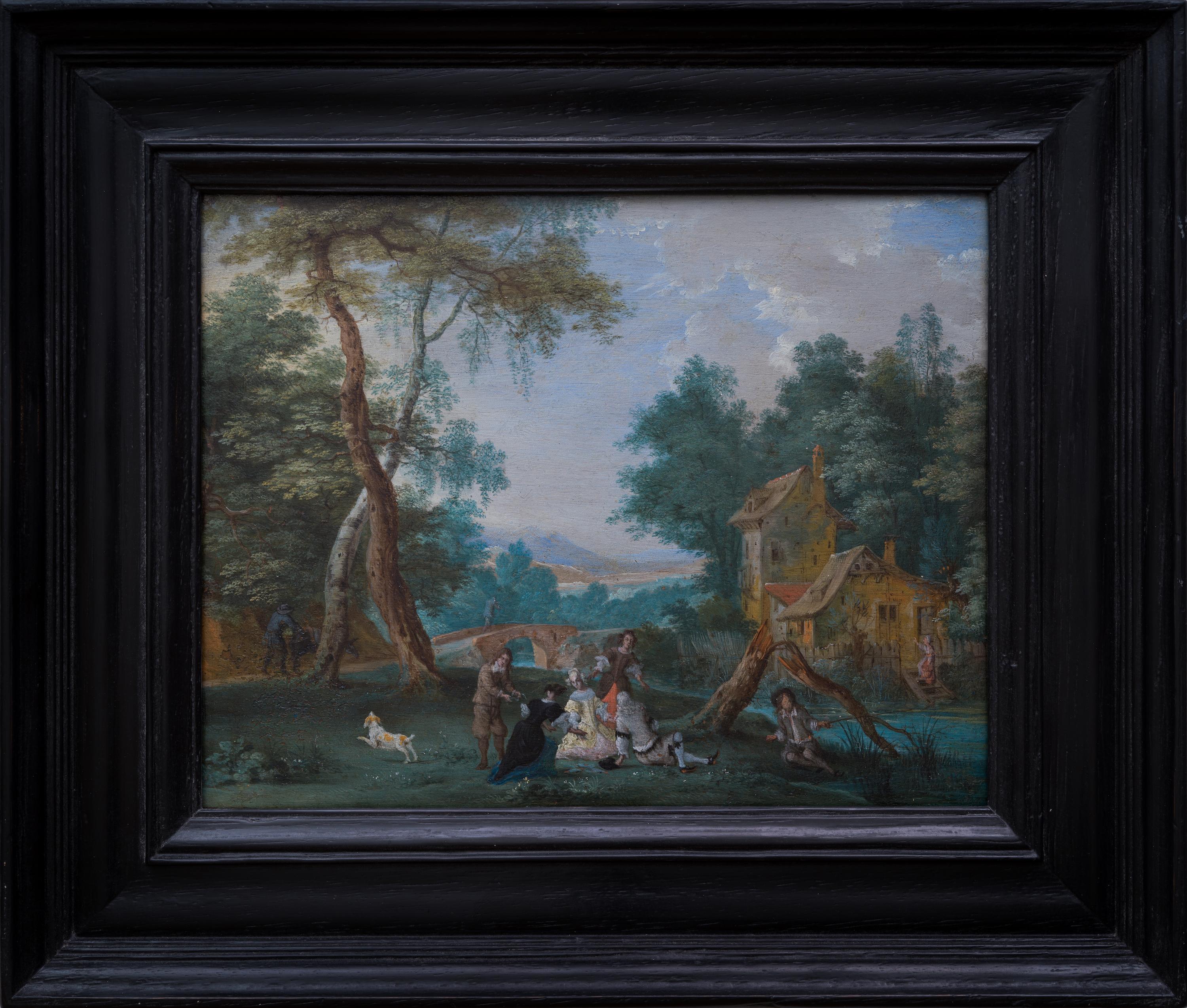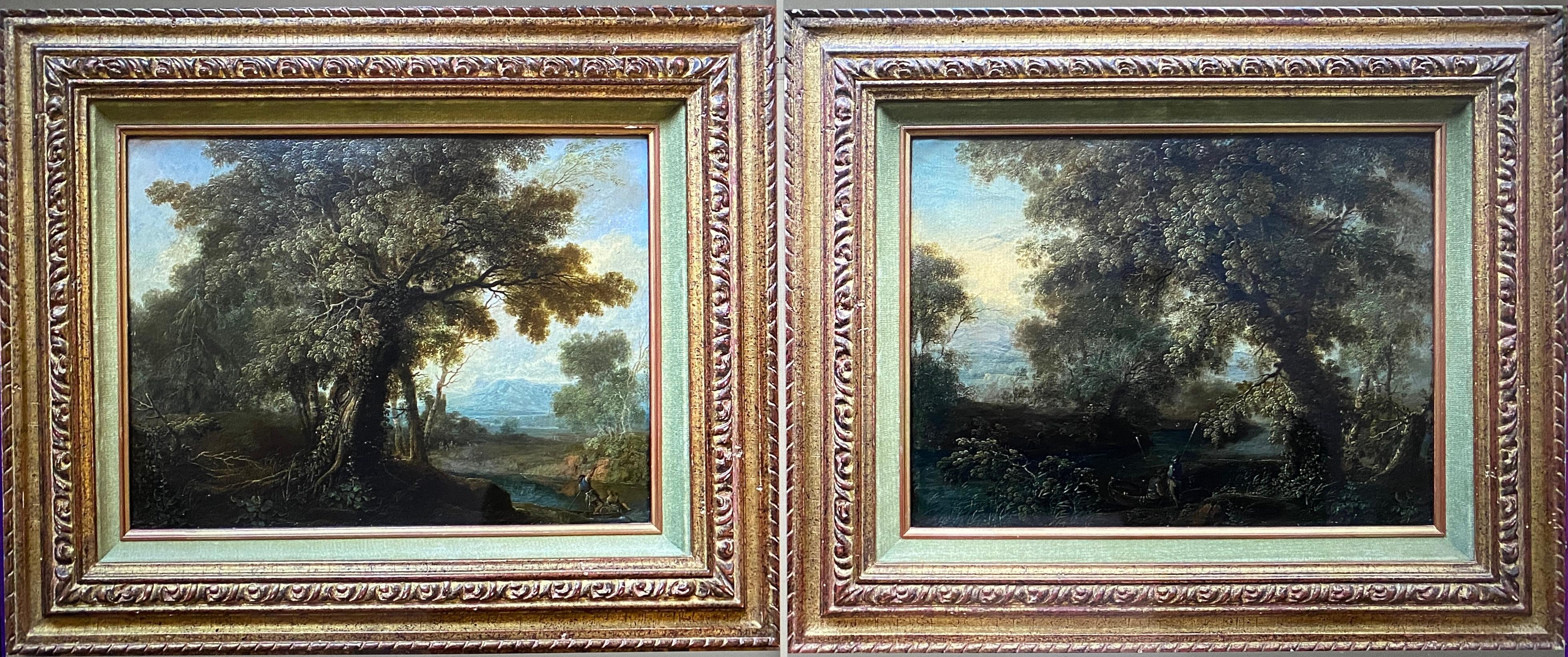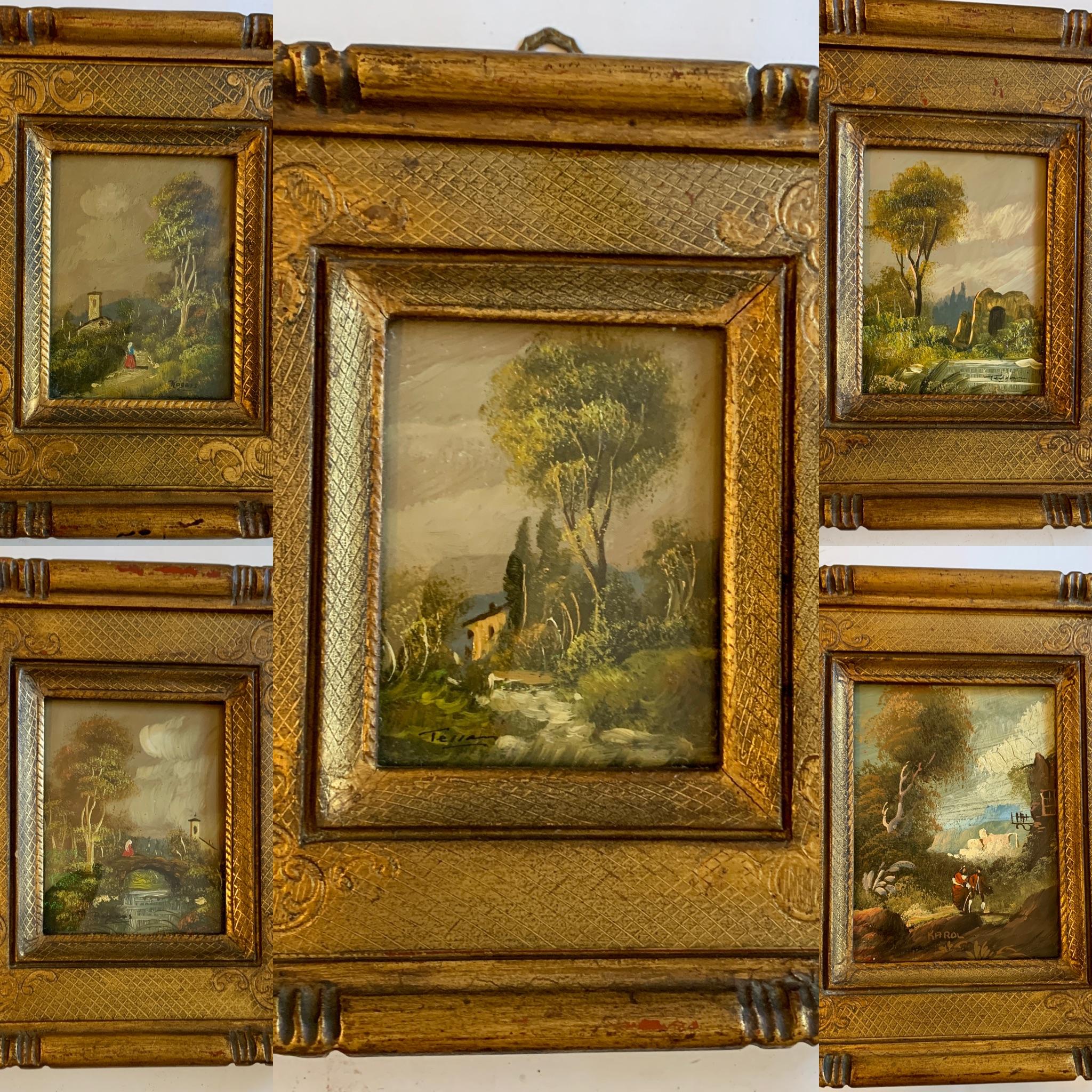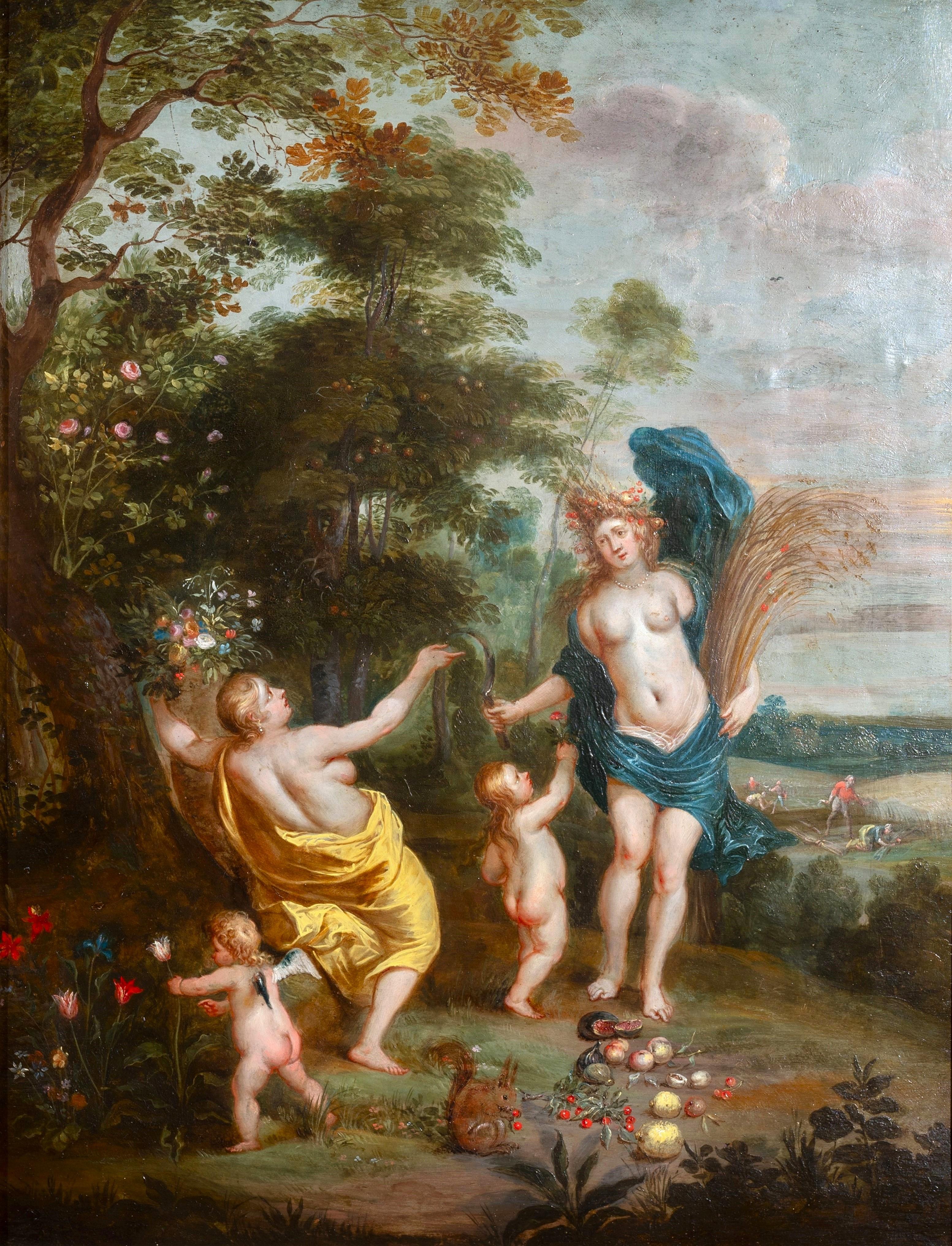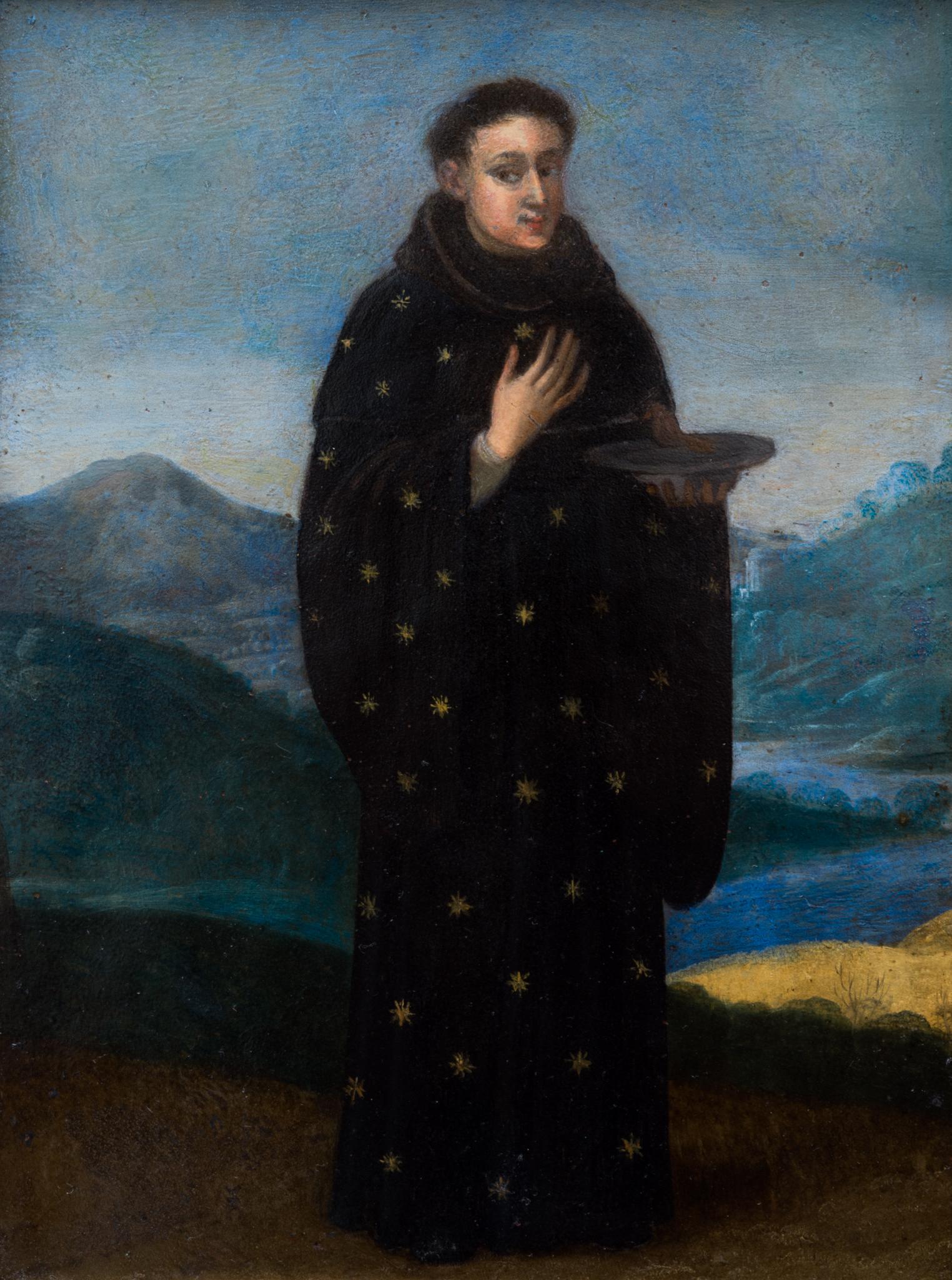Items Similar to The Adoration of the Magi by Joseph van Bredael
Want more images or videos?
Request additional images or videos from the seller
1 of 8
Joseph van BredaelThe Adoration of the Magi by Joseph van BredaelLate 17th/early 18th century
Late 17th/early 18th century
About the Item
Joseph van Bredael
1688-1739 Flemish
The Adoration of the Magi
Oil on copper
Painted on copper and exhibiting an exquisite luminosity, this exceptional painting was composed by famed Flemish artist Joseph van Bredael. Entitled The Adoration of the Magi, van Bredael masterfully tells a timeless narrative in a single image, reinterpreting the biblical scene to be quintessentially Flemish in its presentation. Exceptionally detailed and virtuosic in its composition, the painting beckons the viewer closer to examine the fine brushwork and the expansive crowd gathering in the countryside. Building on the compositions of the famed Jan Brueghel the Elder, van Bredael forges his own path, bringing his distinctive luminous palette and deft brushwork to this work of art.
Van Bredael’s The Adoration of the Magi depicts the biblical moment when the Magi present their gifts to the Christ child, as described in Matthew 2:11. Van Bredael’s composition injects new life into the time-honored tale of the three kings by placing the scene squarely in Flanders, rather than the distant lands of Bethlehem. While still centered around the illuminated figure of the infant Jesus sitting in his mother’s lap, the Magi are merely a trio of figures within the large Flemish community that gathers outside the rural barn. The distant cityscape, as well as the Magi’s richly colored and patterned robes and jewels, emphasize van Bredael’s skill as a genre painter in clearly articulating each and every detail with delicate brushwork.
A Flemish artist coming of age at the turn of the 18th century, Joseph van Bredael hails from a long line of painters. Upon moving to Paris in 1735, the artist became a member of the Académie Royale in the court of Louis, Duke of Orléans. Primarily working in landscapes and genre scenes, the highly referential artist drew from Flemish greats like Brueghel while incorporating distinctive personal touches — slender forms, light brushstrokes and a rich palette. In fact, van Bredael’s The Adoration of the Magi builds on Brueghel’s masterpiece of the same popular subject, held today at the Museum Mayer van den Bergh in Antwerp, yet maintains van Bredael’s singular style. As van Bredael signed his paintings “JB,” the same signature employed by Jan Brueghel I, many of his artworks were historically misidentified as works of the 17th-century master. Corrected attributions in recent decades have brought a burgeoning appreciation for Van Bredael’s technical prowess and meticulous eye for detail. Today, van Bredael is remembered for his talent and artistry in continuing the illustrious tradition of 17th century painting in Antwerp.
Late 17th/early 18th century
Copper: 9" high x 13 1/8" wide
Frame: 12 1/2" high x 16 3/4" wide x 1 1/2" deep
Provenance: Private collection
Private collection, Geneva, Switzerland
M.S. Rau, New Orleans
- Creator:Joseph van Bredael (1688 - 1739, Flemish)
- Creation Year:Late 17th/early 18th century
- Dimensions:Height: 12.5 in (31.75 cm)Width: 16.75 in (42.55 cm)Depth: 1.5 in (3.81 cm)
- Medium:
- Movement & Style:
- Period:Late 17th Century
- Condition:
- Gallery Location:New Orleans, LA
- Reference Number:
About the Seller
5.0
Vetted Seller
These experienced sellers undergo a comprehensive evaluation by our team of in-house experts.
Established in 1912
1stDibs seller since 2013
13 sales on 1stDibs
Typical response time: 4 hours
- ShippingRetrieving quote...Ships From: New Orleans, LA
- Return PolicyThis item cannot be returned.
More From This SellerView All
- Moses and the Pillar of Cloud by Lucas Cranach the Elder and StudioBy Lucas Cranach the ElderLocated in New Orleans, LALucas Cranach the Elder and Studio 1472-1553 German Moses and the Pillar of Cloud Oil on panel Moses and the Pillar of Cloud is a bold and evocative composition that showcases the signature intense color and intricate detail of Lucas Cranach the Elder’s celebrated oeuvre. The remarkable 16th-century oil on panel by Lucas Cranach and his studio captures the narrative moment when Moses leads the Israelites out of Egypt and encounters God manifested through a large pillar of cloud. Moses stands at the precipice of a bridge and turns back to soldiers helping to lead the group of Israelites who huddle closely together. Cranach depicts Moses with his traditional iconography, rendering the rays of light on his head which came to be interpreted as "horns" in the translation of the Bible. Using his traditional walking staff, Moses gestures toward the pillar, seemingly acknowledging that God will protect the group as they cross the bridge to the other side, leaving exile and entering a promised land. In a nod to Cranach’s Germanic locale, he renders the figures and setting in a manner that feels decisively more akin to European aesthetics than those of the Red Sea. Soldiers wear elaborate, gothic suits of armor that recall the livery of Northern European guardsmen. The terrain appears more like a European forest giving way to a sweeping valley than the arid landscape the Israelites trekked through on their journey across the Red Sea. Though still clearly recounting a story from the Old Testament, Cranach renders the cast of characters and setting in an earthly, familiar manner. This aesthetic shift speaks to Cranach’s own changing beliefs as he found himself at the center of the Protestant Reformation. After first gaining recognition in 1505 as the official painter of Frederick the Wise, Cranach established a thriving painting and print studio in Wittenberg, Germany. Cranach was renowned for his court portraits and genre paintings and was also well known for his association with the famous protestant reformer Martin Luther, then under the protection of Frederick the Wise. As Wittenberg became a bastion of new religious thought, Cranach soon befriended Luther and played an active role in creating the printed materials that proliferated throughout the Reformation...Category
16th Century Old Masters Figurative Paintings
MaterialsOil, Panel
- Bali by A. E. HerrmannBy A. E. HerrmannLocated in New Orleans, LAA.E. Herrmann Active in the 1920s Dutch Bali Signed "A.E. Herrmann 1932" (in lower right hand corner) Oil on canvas This enchanting work by Dutch artist, A.E. Herrmann depicts an exotic scene in Bali. In this magnificent painting depicting four Balinese women packing baskets, a vivid background is painted so that it is vibrant with the tropical colors of Indonesia. The stunning melon-hued temple becomes a focus in the painting and evokes a serene and mesmerizing scene of a faraway land. Indonesia and in particular Bali and Java was an extremely important...Category
20th Century Figurative Paintings
MaterialsOil
- L’embarquement by Gaston La ToucheBy Gaston La ToucheLocated in New Orleans, LAGaston La Touche 1854 - 1913 French L’embarquement The Embarkment Signed "Gaston La Touche" (lower right) Oil on panel A fashionable group of merrymakers boards a rowboat at sundown in this oil on panel by renowned French painter Gaston La Touche. Softly lit and lushly detailed, the work represents the artist’s talent for capturing the gaiety of the Belle Époque. With its luminous coloring and feathery brushwork, this oil evokes the style and joie de vivre of the era rendered in La Touche’s distinctive, mature style. Fresh and airy, the work is a beautiful example of the artist’s skill at capturing the subtle qualities of light and color. Set against the plein air backdrop of a wooded pond awash in the soft glow of the golden hour, the scene reflects the influence of the Impressionists. The subject also recalls works by Manet, Monet and Renoir, who delighted in depictions of modern leisure among the expanding middle class. The scene is an informal one, and its unconventional cropping suggests that the viewer is invited to take a seat in the boat and join the group on their outing. Such relaxed, inviting scenes were remarkably popular among contemporary, modern audiences. However, La Touche's style is singular, possessing an element of fantasy and romance that set him apart from the Impressionists. Gaston La Touche was born in St. Cloud, outside of Paris, in 1854, and he showed a keen interest in art from a young age. At ten years old, he began taking private art instruction, which lasted until 1870, when his family was forced to flee to Normandy amid the Franco-Prussian War. This was the only formal art training La Touche would ever receive. Despite his lack of Academy training, he made his debut at the Paris Salon of 1875 with a sculptural medallion and etchings, and he exhibited his first painting at the Salon of 1881. Although he began his career painting dark-toned realist compositions, by 1890, his style had shifted to what would become his signature — a lighter, brighter, idealistic society world. The artist was associated with practically all of the most influential artists and thinkers of late 19th century France, including Édouard Manet, Edgar Degas, Émile Zola, who frequently met at the legendary Cafe de la Nouvelle Athenes to share their thoughts on modern society. In 1900, he was named a Chevalier of the Legion d'Honneur and an Officer in 1909. Additionally, he was well-decorated at the grand...Category
Late 19th Century Impressionist Figurative Paintings
MaterialsOil, Panel
- A Spring Roundelay by Edward Atkinson HornelBy Edward Atkinson HornelLocated in New Orleans, LAEdward Atkinson Hornel 1864-1933 Scottish A Spring Roundelay Signed “E A Hornel” and dated 1910 (lower left) Oil on canvas Visually arresting with the v...Category
20th Century Figurative Paintings
MaterialsCanvas, Oil
- La Petite Swan By Ramon DilleyLocated in New Orleans, LARamon Dilley 1933 - Spanish La Petite Swan Signed “Dilley 91” (lower right) Signed and titled “Ramon Dilley / La Petite Swan” (en verso) Oil on board laid on canvas This captivat...Category
20th Century Post-Impressionist Figurative Paintings
MaterialsOil, Canvas, Board
- Dance of the NymphsBy Paul Desire TrouillebertLocated in New Orleans, LAThis lyrical landscape entitled Dance of the Nymphs was composed by the French Barbizon painter Paul Désiré Trouillebert. A joyful scene of nymphs dancing the morning fog, the work closely resembles an important work by the great Camille Corot, which is now housed at the Musée d'Orsay (Paris). Renowned for his unique individuality that toed the line between the traditional and modern, Corot and his landscapes helped pave the way for an entire generation of Impressionists who followed him. Trouillebert perfectly captures the poetic atmosphere of Corot’s groundbreaking works, while also imbuing this scene with a freshness and character that is all his own. Trouillebert's oil on canvas is exemplary of the tradition of historical painting. The work perfectly combines a realistic depiction of the natural world with a spirited romanticism as his idealized nymph figures frolic playfully beneath a crisp morning sky. As a whole, it is a lovely composition executed with a level of skill and artistry that proves Trouillebert's exceptional talent in the arts. Born in Paris in 1831, Paul Désiré Trouillebert was a student of the academic painters Ernest Hébert...Category
19th Century Academic Landscape Paintings
MaterialsCanvas, Oil
You May Also Like
- Stag Hunting in the Vicinity of Nuremberg by a German Artist Peter von BemmelLocated in PARIS, FRThis small landscape shows a hunting scene: two riders are chasing a stag with their dogs at the edge of a forest. Signed by Peter von Bemmel, it is typical of the production of this...Category
1720s Old Masters Landscape Paintings
MaterialsCopper
- A Wooded Landscape With Riders, Attributed to Pieter Gysels, Oil on CopperLocated in Stockholm, SEPieter Gysels, also known as Peeter Gijsels, was a renowned Flemish painter who lived from 1621 to 1690/91. He was known for his landscapes, which often depicted idyllic scenes from nature, and his works are highly sought after by Old Master collectors. We are proud to offer a newly discovered pair of landscapes attributed to him; this one called "A Wooded Landscape With Riders" This stunning painting captures the beauty of a serene summer day in the countryside. In the foreground, we see a couple riding on horsebacks, enjoying the peaceful surroundings. The horses seems to be trotting gently, and the riders are relaxed, taking in the natural splendour around them. In the distance, we see several other figures, perhaps farmers or peasants, doing their daily tasks. We also see a small stream flowing through the landscape, with several small houses. And in the background, we see a beautiful wooded area with tall trees reaching up towards the sky. The attention to detail in this painting is truly remarkable. Gysels use of vibrant colours evoke the warmth and beauty and he skillfully captured the play of light on the landscape, creating a sense of depth and atmosphere. The detailing of the cottages, the colors, the use of big-leafed plants in the foreground, and the figure types are typical of his signature style. "A Wooded Landscape With Riders" is painted on copper, which gives the painting a unique luminosity and depth. The use of copper as a support for paintings was popular in the seventeenth century. We also have one more painting called "Wooded Landscape With an Elegant Company...Category
17th Century Old Masters Figurative Paintings
MaterialsCopper
- A Pair of Forest Landscapes, Philipp H. Brinckmann, 1709 – 1761, Old MasterLocated in Bruges, BEA Pair of Forest Landscapes with River and Boat in the Foreground Brinckmann Philipp Hieronymus Spire 1709 – 1761 Manheim Old Master Signature: Signed "Ph. Brinckm" bottom lower lef...Category
18th Century Old Masters Landscape Paintings
MaterialsCopper
- Five mid 20th century Italian oil landscapes with figures, castles, ChurchsLocated in Woodbury, CTA very interesting set of five mid-20th-century Italian oils on copper. All five are classical landscape subjects and are signed Roger, though we don't know which artist with the n...Category
1950s Old Masters Landscape Paintings
MaterialsCopper
- Allegory of Summer, workshop of Hendrick Van Balen 17th c. Antwerp schoolBy Hendrick van BalenLocated in PARIS, FRAllegory of summer, personified by Ceres Workshop of Hendrick Van Balen Antwerp School, early 17th century. Oil on copper, Dimensions: h. 52 cm, l. 40cm Antic giltwood frame Framed dimensions: h. 74 cm, l. 60cm Very good condition Our delicately painted work is part of the pictorial tradition that is both allegorical and mythological in vogue in Antwerp, whose leaders are Jan Brueghel the Younger and Hendrick Van Balen. Numerous works emerging from their workshops illustrate mythological subjects, the seasons, the elements, the senses or intertwining the lush landscapes, animals and gods of Olympus. At the heart of a green landscape dominated in its center by a generous apple tree, the beautiful Ceres, partially dressed in a large blue drape, is wearing a crown of ears of wheat, her symbol of the goddess of the earth and harvests. She holds the sickle in her right hand and carries sheaves of wheat. To her right a nymph holds the cornucopia while puttis pick and offer flowers. In the foreground are the summer fruits: figs, cherries, apples and lemons. A squirrel munching on cherries symbolizes toil and foresight, themes that are echoed in the work of the harvesters on the wheat fields in the background. The background is composed of vegetation, on the right a wild rose bush with its branches erect against a tree trunk, in the center of the trees with silvery green foliage. Our painter, a student of Hendrick Van Balen, finds his inspiration in the works of the master such as this nymph in yellow drapery seen from behind, one of the figures which accompanies many of the master's paintings. The elegant gestures, the flesh...The indisputable influence of Jan Brueghel the Younger is revealed in the treatment of trees and flowers, wild roses, tulips as well as in the still life with the squirrel in the foreground. The craze for this type of virtuoso painting where the mythological figures are only a pretext to better illustrate the landscape and plant species surrounding them, then generated orders from all over Europe. Hendrick Van Balen, Flemish painter, born and died in Antwerp (1575-1632). A student of Adam Van Noort, he entered the guild of Saint-Luc in 1593, later trained in Italy and was Van Dyck's first master. He often painted small characters taken from scenes from the Bible or classical mythology, on paintings in which Josse de Momper...Category
Early 17th Century Old Masters Figurative Paintings
MaterialsCopper
- Old Master Painting, Flemish School from 1600s, Saint Nicholas of TolentinoLocated in Stockholm, SEThis small Flemish painting, measuring only 24.5 x 18.5 cm and executed on a copper plate, depicts Saint Nicholas of Tolentino. Created in the 17th century, the artist remains unknow...Category
17th Century Old Masters Landscape Paintings
MaterialsCopper
